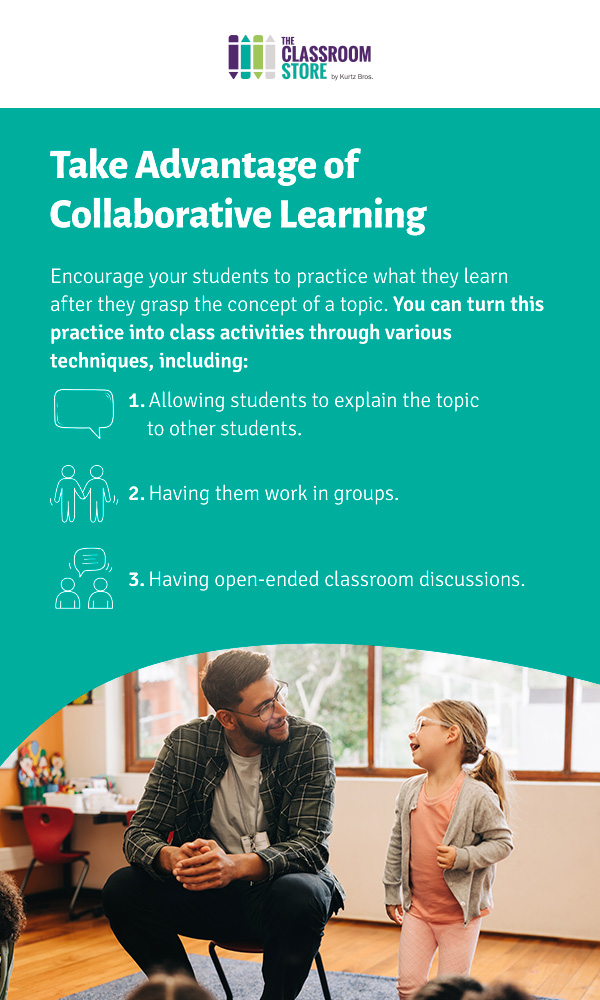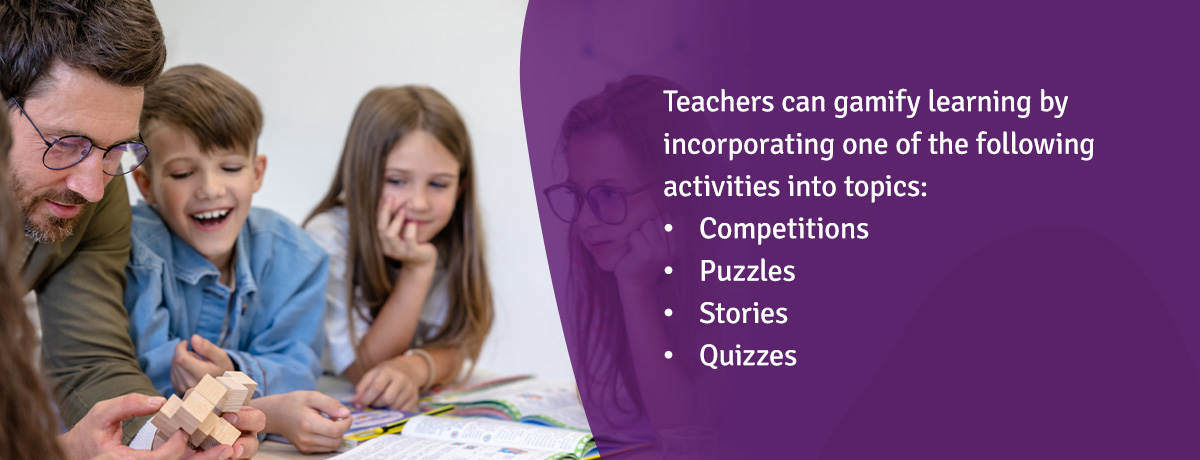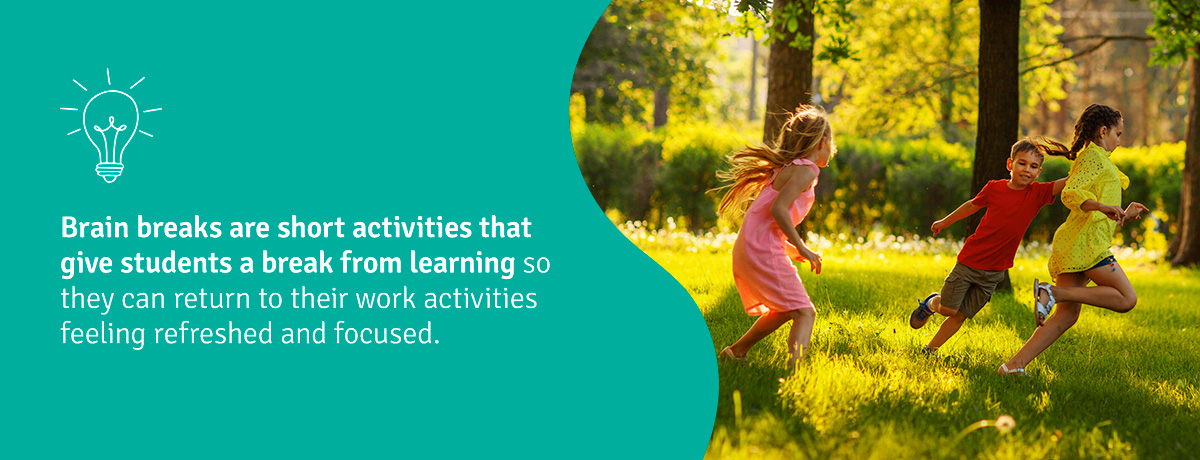How to Improve Student Engagement

The primary goal for any educator is to keep students engaged so they understand learning material on a deeper level. Improving student engagement leads to better focus and enthusiasm toward lessons and activities throughout the learning process.
As an educator, you will see better concentration levels from your students and gain appreciation from both parents and administrators. Whether you’re looking to improve your teaching methods or help the school reach its learning goals, you’ll need active strategies for student engagement. This guide explores 18 ways to improve student engagement and enhance your learning environment.
1. Create a Safe Space for Learning
The first practice any teacher should implement to foster student engagement is showing that you care about your students and their growth as learners. Doing so creates a strong classroom culture and a safe learning space for your students. Take the time to engage with your students during class time by learning their names and interests and ensuring you involve all students in learning activities.
It’s equally important to lay out clear expectations both behaviorally and academically to reduce disruptions to the flow of learning. Remind your students that challenges are natural and making mistakes is acceptable as long as they learn from them. All these factors come together to make it easier for students to engage in deeper learning.
2. Take Advantage of Collaborative Learning

Encourage your students to practice what they learn after they grasp the concept of a topic. You can turn this practice into class activities through various techniques, including:
- Allowing students to explain the topic to other students: When your students start to understand a topic, allow them to explain their knowledge to the class and answer any questions their classmates may have. As they speak, they’ll begin to understand the information on a deeper level, and you can evaluate and correct them if there are any misunderstandings.
- Having them work in groups: Rather than letting students solve problems silently on their own, increase their engagement by allowing them to form small groups and discuss the topic together. This group discussion will prompt students to explain their reasoning to each other and understand the work in a deeper capacity.
- Having open-ended classroom discussions: Open-ended questions have multiple correct answers and valid perspectives. You can ask students these questions during class discussions to ensure students understand the gist of a topic and engage in learning before you begin teaching.
3. Understand Your Students’ Interests
Improve student engagement by getting to know your students and what interests them so you can incorporate an engaging practice into the learning process. Including examples and topics that interest your students allows you to maintain their engagement throughout the lesson. Working with their interests can also help you build stronger relationships and keep them excited for their next lesson.
Remember that different students learn more effectively in different ways. You should cater to all these learning methods when possible. For example, while some students learn best through visuals, others may understand better through listening to lectures or practicing what they learn.
4. Brainstorm Together
Brainstorming is another excellent way to encourage students to develop creativity, collaborate and share their ideas. This method helps you see how well your learners understand the topic. Brainstorming can be complex and requires their complete focus, encouraging them to take more time to think about their answers and stay engaged.
It also creates a study environment and teaches them the importance of focus. At the same time, it builds teamwork skills and group effort when the teacher and students offer feedback for improvement to each other.
5. Encourage Feedback
Feedback is essential for students and teachers to create a healthy learning environment. Give your students regular constructive feedback that encourages growth and emphasizes the importance of practice and effort. Highlight areas of improvement and areas where they are doing well.
You can also ask your students for feedback about your teaching methods regularly to ensure you and your students grow and that your students benefit from your classes. Encouraging feedback for yourself and your students can enhance your relationship with students, allowing you to build more trust and a positive learning environment that values continual growth.
6. Reward Hard Work
Rewarding hard work helps students regain their focus and meet classroom expectations. A reward can be anything from a golden sticker to a snack or early break. You can reward group work rather than individual achievements since students will remind each other to focus rather than the teacher doing so.
Students can also turn it into a friendly competition against other students. Competing can keep students engaged and create a memorable experience that ensures they retain the information they learned during the competition.
7. Set Learning Goals and Follow Up
When students work toward a goal, they are more likely to stay engaged to meet those goals, whether you set them for a single topic or an entire course. You can break larger goals into smaller steps to avoid overwhelming them and ensure they stay on the right path.
As the teacher, your job is to check in with students continuously to ensure they receive the feedback they need to achieve their goals. You can also boost engagement and remind students of their goals by restating them in assignments and activities and explaining how they can apply them to their interests or everyday lives.
8. Reflect on Learning Processes
When providing students with feedback, create self-assessment periods to encourage metacognition. Metacognition helps students master and sustain their motivation to learn. Self-reflection allows them time and guidance to reflect on their progress effectively. This reflection allows students to look clearly at what they have achieved so far, how they got there and where they need to improve.
The teacher’s role is to help them understand how to improve. The best way to achieve this is by providing feedback on major assignments and activities. Allow them to reflect on those key assignments immediately after receiving their results and feedback while the information is fresh.
9. Gamify Learning
Gamified learning includes lessons or portions of lessons that you turn into a game. Gamification can be particularly useful for important concepts or hard-to-understand topics to improve students’ understanding and engagement. These games are likely to keep students engaged throughout the class.
Games encourage students to participate in the learning process, have more interest in the subject and enjoy lessons. They solidify their knowledge of a topic and help students remember how to apply solutions to similar situations. Gamified learning can also enhance problem-solving, collaboration and critical thinking skills. Teachers can gamify learning by incorporating one of the following activities into topics:

- Competitions
- Puzzles
- Stories
- Quizzes
10. Use Mixed Media
Technology can be an asset to education when used effectively. Educational tech resources are one of the most creative ways to engage students in the classroom. Some mixed media you can introduce in the classroom include:
- Video
- Audio
- Interactive quizzes
- Educational digital games
Mixed media offers a break from the usual hand-written information, encourages them to stay active and engages students in their lessons. It also creates a direct connection to the digital world they are familiar with.
11. Implement Hands-On Tasks
Hands-on tasks are one of the most effective strategies for student engagement. Limit your lectures and encourage students to act and carry out what they have learned instead. This can help students understand what they have learned and how to apply their knowledge to various practical situations.
Hands-on tasks will also maintain your students’ attention during the learning experience and help them build and showcase the skills and knowledge they gained from the lesson.
12. Encourage Movement
Young students, in particular, may prefer moving around to sitting still throughout lessons. Channel their energy into something productive to improve engagement. Here are some ideas you can use:
- Split your students into groups and assign them to different areas of the classroom.
- Allow students to brainstorm together on the whiteboard.
- Encourage students to move to a particular area in the classroom based on their thoughts. For example, tell all students who believe in Idea A to stand on the right side of the room and those who believe in Idea B to move to the left side of the classroom.
- Ask students to rotate through different stations for different stages of an activity.
Movement can also help disengaged students build up energy through physical activity, getting them excited to learn and ready for their next phase of learning.
13. Use Brain Breaks
To avoid overloading students with information, allow them to cool down with brain breaks. Brain breaks are short activities that give students a break from learning so they can return to their work activities feeling refreshed and focused.

These breaks include anything from a five-minute stretch to a short walk outside. Brain breaks help students overcome and find ways to deal with overwhelming feelings and increase productivity.
14. Encourage Friendly Competition
Friendly competition can motivate students to stay engaged, do their best and test their limits to retain and understand information. Some competitive activities include quizzes and gamified learning. Competing allows students to test their skills with peers.
You can enhance these competitions by placing students into groups so they have peers encouraging them to achieve their best. Be sure to emphasize the friendly aspect of the competition and ensure students understand that learning is the most important outcome. You can do so by outlining the main takeaways at the end of the competition.
15. Fill “Dead Time”
There may be times when your students are without something to do when you need to leave the classroom briefly, hand out worksheets or set up a presentation. These moments are the perfect opportunities for students to become disengaged before you even begin a lesson.
You can avoid this by filling these blank learning spaces with small activities that hold the students’ attention. These activities are easy, quick and usually require little follow-up. Some low-order activities you can implement include:
- What I know already: Before diving into new content, ask students to jot down three things they already know about a topic.
- Think-pair-share: Pair students to reflect on a topic and then share their thoughts and takeaways with the rest of the class.
- Quickwrite: Ask your students to write down any questions or takeaways the lesson has raised so far.
16. Incorporate Real-World Examples
Your students will be more engaged in a lesson when they understand how it can relate to their life beyond school. Explain how they will use the information in real life through real-world examples, anecdotes and case studies. Teach students how to transfer and apply their knowledge to real-life situations beyond academics, making your lesson more relevant and interesting.
Asking students how a topic relates to the real world is another excellent way to encourage them to engage their critical thinking skills.
17. Encourage Active Learning
Active learning involves encouraging students to actively engage with the subject material on a deeper level. Some examples of active learning include:
- Roleplay
- Discussions
- Case studies
- Problem-solving
These learning activities give students control and responsibility over how much they understand and how well they perform academically. As a teacher, your role is to guide them in discussion and ask questions that inspire them to share their thoughts and collaborate. When students apply what they learn, they retain the information and learn how to approach those situations better. Active learning also allows students to explore other students’ perspectives and combine their ideas to break down and understand information better.
18. Read the Room
The most important aspect of improving student engagement is knowing how to read the classroom. Are your students engaging in off-topic chatter? Are they doodling away instead of listening to your lecture? Are they taking apart their pens or balling up pieces of paper? If so, it’s time to shake things up.
Ask your students what they find challenging to understand and remind them that your class is a safe learning space where all questions and answers are welcome. Clarify your instructions if they are unclear, and cut lectures and activities short if they take away from your students’ engagement. While keeping all students engaged may be challenging, you can still take immediate action when you notice disengagement to ensure most students are present during your lessons.
Improve Student Engagement With The Classroom Store
With the right materials and school supplies, you can easily enhance your student engagement strategies. Take your student engagement practices to the next level with The Classroom Store. We aim to help schools and teachers create a safe and engaging learning environment for students with the best tools and classroom materials. We welcome you to browse our large selection of products today to create a fun learning experience for your students!


